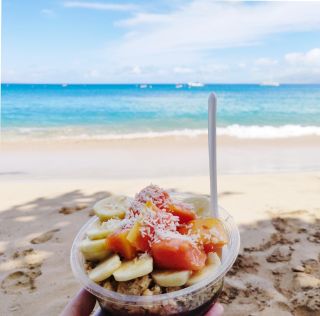Education
High School Student Researches Real-Life Marketing
Authentic Exploratory Research hones students’ business and analysis skills.
Posted May 1, 2024 Reviewed by Monica Vilhauer

This is the second post in a series.
What if high school students could conduct methodical research on important questions like graduate students and researchers do? Well, as the students at Laguna Beach High School (LBHS) are demonstrating, they can.
In Part I of this series I interviewed Jun Shen, the passionate teacher and edtech coordinator who runs LBHS’s Authentic Exploratory Research (AER) Program. AER is an independent research course inspired by Palo Alto Unified School District’s Advanced Authentic Research program. The program pairs students with adult mentors (such as LBUSD staff, industry experts, and academics) who assist the teens in researching their own big questions in fields of their choice. Shen’s explanation of how the AER program works, combined with students’ input through the rest of this interview series, lets us glimpse some of the different ways students can use the program to pursue individual passions, as well as how other educators can implement such a program.
LBHS student Aryana Mohajerian was the first to give us an account of her experience in AER and the findings that her AER research produced. Mohajerian’s answers follow each question below.
Jenny Grant Rankin: In short, what was your research study about?
Aryana Mohajerian: In short, my research was about marketing a membership program to different target demographics in a small, high-end, health-conscious, confectionary business in Hawaii.
I analyzed how new marketing efforts will help increase overall revenue and cash flow in the business. The new strategies I implemented were creating a set target market using survey data. I also created a brand kit with all the customer values, color palettes for the website, and copy.
JGR: What were your most important findings?
AM: My most important findings were that it is critical to know the psychology of business and be able to put yourself in the customer’s shoes. I had to figure out what a target market’s values, goals, and mindset are like to better appeal to their logic and emotions when trying to make a sale.
I distributed a survey to better understand the company’s current customers, what their values are, and what draws them towards purchasing.
When proposing ideas for what draws customers to the company, my hypothesis proved correct. 100% of people selected that they value environmental sustainability and the farm-to-table process. 70% of people selected that they are health-conscious consumers and 85% love the Hawaii-island, beachy lifestyle. With these proven conclusions, I created three new membership plans for Lonohana, each targeting a specific audience, according to the survey results.
The first membership was family-oriented, catering to children and their parents. The customer values were inclusivity, appeals to a health-conscious family, and living an active lifestyle in the great outdoors. The second membership caters to young adults. For example, college students or recent graduates living a youthful, and spontaneous lifestyle. This membership was an affordable line of products, since young adults like to have fun on a budget. These young individuals love the island lifestyle of Hawaii and love trying Lonohana’s unique flavors. The third membership was targeted toward more professional and formal individuals. These high-end customers value luxury products and the education behind making them. This membership included informational cards on each bar, describing how it was made and where the ingredients come from.
JGR: What was the biggest thing you learned about conducting research?
AM: The biggest thing I learned about conducting research is that it requires thorough planning and first making a hypothesis of what the results will be. Understanding the psychology behind why people spend money on luxury items was essential because it guided me on how I worded my survey to get the most honest responses from customers. For example, a customer value I noted was a sense of family and community involvement. Therefore, I concluded that customers are likely to purchase membership boxes to have enough gifts on hand for family or community gatherings, which was proven true based on the survey.
JGR: What was the biggest thing you learned about communicating research?
AM: The biggest thing I learned about communicating research is that I need to create an eye-catching, yet simple poster to present at the AER Symposium. When I did my presentation, I mainly focused on the visuals of my project and some easy-to-read graphs. I brought the marketing materials I had made, such as brochures, business cards, and the printed-out brand kit to show my audience. I found that having a hands-on experience with cohesively colored materials helped me get my message across in a fun way that did not bore anyone. Having all these materials helped invoke questions from my audience as well.
JGR: What was your favorite part about AER?
AM: My favorite part about AER was the fact that I was able to work with a real-world company while in high school alongside a mentor who was working my dream job. AER was such a unique opportunity for me to learn about my interest in marketing and the psychology behind why we buy luxury items. Although this was a class, it did not feel like traditional learning because I went out into the real world to enhance a business’s marketing tactics. Learning by doing is the best way to gain experience. I learned a lot more about marketing through my AER project than I did taking “Intro to Marketing” in a dual-enrollment community college class.
It’s exciting to find that the program advanced not only Mohajerian’s research skills but her career skills, as well. That is a common theme in students’ accounts of their AER experiences.




